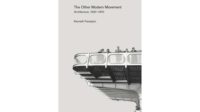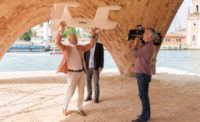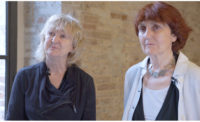Interview with Kenneth Frampton
The winner of the 2018 Golden Lion award speaks to RECORD about his life's work.

Photo © Columbia GSAPP

Ken Frampton receiving his Gold Lion at the 2018 Venice Architecture Biennale.
Photo © Architectural Record


Architect, historian, critic, and educator Kenneth Frampton is this year’s recipient of the Golden Lion for Lifetime Achievement, awarded at the May opening of the 16th International Architecture Exhibition of the Venice Biennale. His well-known essays and books include Modern Architecture: A Critical History (1980), now in its fourth edition, with a fifth under way. Born in the UK in 1930, he studied at the Architectural Association in London, then worked in the city as an architect for Douglas Stephen & Partners in the early 1960s. In 1962, Frampton also became the technical editor of the journal Architectural Design, a move that foretold his later commitment to writing. In 1965, he began teaching at the Princeton University School of Architecture and in 1972 joined the faculty of Columbia University’s Graduate School of Architecture, Planning and Preservation in New York. Critic Cynthia Davidson spoke with Frampton in his Columbia office about his life’s work.
The Golden Lion typically goes to a practicing architect. But Yvonne Farrell and Shelly McNamara, curators of this year’s Biennale, praised you for arguing for a “humanistic” component “throughout all of the various ‘movements’ and trends often misguided in architecture.” Have you been prevailing against the misguided?
I’ve approached my work through the question of the Modern movement, which from 1918 to 1938 had a certain vitality bound up with modernization—with the idea of the redistribution of wealth and of the welfare state as integral parts of the Modern project. Most of the discussion today is not about that. It’s very complex, of course, because of the talk about feminism and racism and, quite rightly, about the misdistribution of wealth in the United States, but criticism of capitalism is less common. The very aggressive phase of global capitalism that we have entered is a very ruthless landscape, and the techno-sciences, our pride and joy, are the one thing we seem to have lost all control over.
Why is writing important in architecture?
What’s important is critical discourse. Once the culture of architecture is no longer a discourse, it has no continuity—it just becomes a technical provision of built form; there’s no other meaning or significance that you can attribute to it. I have certain regrets about not continuing as an architect, but I got a lot out of being involved with the discourse about the history of the Modern movement.
You often use the word “critical” to frame your work—critical regionalism, critical history, comparative critical analysis. What does it mean to you?
The first edition of Modern Architecture has this beautiful Walter Benjamin quote about the angel of history. It’s an unbelievable idea. The angel cannot close his wings because there’s a storm blowing—this storm we call progress. The idea of the critical basically comes from that.
It also sustains your recent book on comparative analysis.
At Princeton, I decided to get the students to analyze buildings. Then I realized, if you analyze just one thing, you understand more about the thing, but that’s it; there’s no tension built into the method. But you reveal sameness and difference and the layering of architectural expression when you compare two works that are from different points of view, answering more or less the same problem. I called it A Comparative Critical Analysis of Built Form. Ironically, when Lars Müller agreed to publish the work, he said he couldn’t sell a book with a title like that. So he invented the title [A Genealogy of Modern Architecture].
At some point, I stopped using that method, because the references all changed. I feel very strongly the speed of change and the way the field of architecture is disturbed by the speed of change.
Architecture doesn’t move very quickly.
Not at all. I often say to students that it’s a kind of anachronistic preoccupation, but that is its strength, in a way. The idea of architecture on the cutting edge is not too convincing.
Editor’s Note: For a discussion of Frampton’s thoughts about phenomenology and architecture, read his review of George Baird’s Writings on Architecture and the City.



